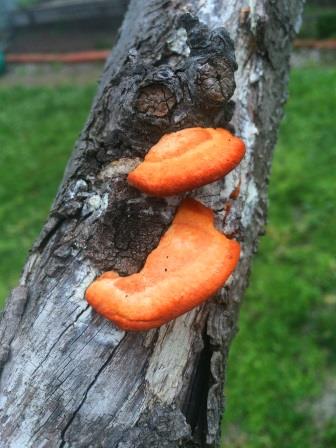
Over the last couple of years we began noticing orange fungus growing on some of our fruit trees. It didn’t seem to be affecting the health of the trees but we were a bit worried anyway. It was growing in and around the cracks in the bark – mostly on the main branches.
It was only the plum and apricot trees that were affected with the orange fungus. The plum tree was the worst affected with many of the main branches dotted with orange fungus. The apricot tree had a few patches but not as bad. We were a bit worried that the appearance of the fungus might be a bad sign for the trees.
So last year I headed into our local nursery, armed with a photo of the fungus, and asked for some advice. I was pleasantly surprised that the treatment was quite easy. The man at the nursery recommended that I scrape off the fungus and then paint the affected sections of the trees with lime sulphur. He also said that he didn’t think it would affect he overall health of the trees – phew! I might need to repeat the process for a couple of years to clear it up completely but at least I had a way to treat the fungal growth.
I followed his instructions and was able to really give the fungus a hard time. This year there has been a small amount of regrowth of the orange fungus but it is definitely much less than last year. In fact there was only around half a dozen small patches on the plum tree this year and only one patch on the apricot tree.
I used the following procedure to treat our fruit trees:
Treating Fungal Growth on Fruit Trees
- scrape the visible fungus growth from the tree (I used a blunt knife)
- paint the area where the fungus has been growing with undiluted lime sulphur (use an old paint brush or pastry brush)
- treated areas will go a silver colour over time
- repeat treatment each year during winter until no fungal regrowth is seen
** Important ** Lime sulphur is quite a smelly product because it produces hydrogen sulphide as it breaks down. For that reason I would recommend wearing a face mask and gloves when using it. Definitely avoid inhaling any fumes or getting it on your skin or in your eyes.
We love our home grown fruit; there is nothing better than sinking your teeth into a juicy home grown plum or apricot. The store bought ones just don’t compare to one you have grown yourself. We actually have four fruit trees; a plum tree, an apricot tree and a couple of apple trees. All of these trees are small but they provide us with yummy summer and autumn fruit.
We would miss our plum and apricot trees so I am really hoping that we will soon cure them of the orange fungus.
If you would like more information on the use of lime sulphur in the garden check out the following links:
Ausgro website: Lime Sulphur Insecticide/Fungicide
Yates website: Products/Yates Lime Sulfur
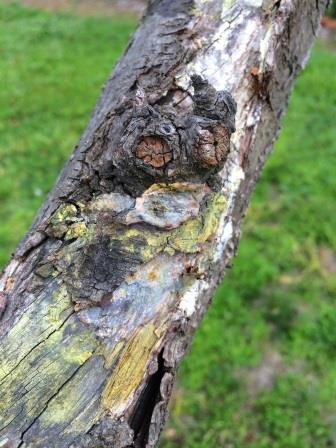
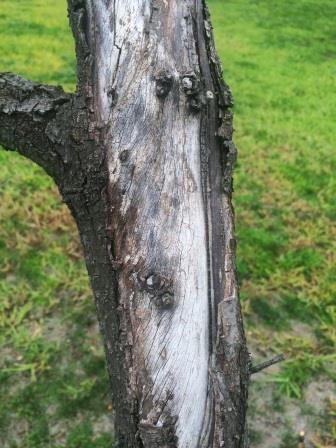
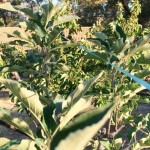
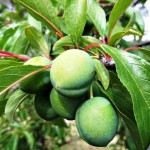
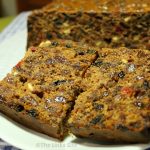

Hi Kaylene,
We have started seeing the similar problem you had, on our Apple tree. I am very much interested to know if the Lime Sulfur treated the Fungus completely? As I notice, you wrote about this issue in 2014 so I hope you are now having great fruit yield 🙂
Thanks in advance.
Hi Amandeep, the lime sulfur killed the fungus but I had to apply it two years in a row to fully treat the tree. Unfortunately a couple of branches on our plum tree had been so badly damaged by the fungus that they had to be cut back hard. It hasn’t effected the overall health of the tree though. In fact last summer we had one of the best crops of plums that we have ever seen! I hope that you are able to have similar success with you apple tree!
Hey Kaylene, thanks a lot for your reply.
I am trying to find Lime Sulphur here in the UK – will let you know how it goes 🙂
Thanks again,
Aman
Did these trees end up surviving? Removing the bark like that looks so damaging, and I was under the impression that by the time fruiting bodies appear on a tree, the mycelium has already spread throughout the whole area, undetectable to the naked eye. Curious to know how this worked out long term!
Hi Sara, yes the plum tree in the pictures is still going strong! A couple of the branches that had been effected by the fungus eventually weakened and struggled under the weight of the plums. So we did have to prune them off. But overall the tree is still very healthy and never fails to produce a bumper crop of plums each summer. We did loose the apricot tree just recently, but I don’t think that it was because of the fungus.